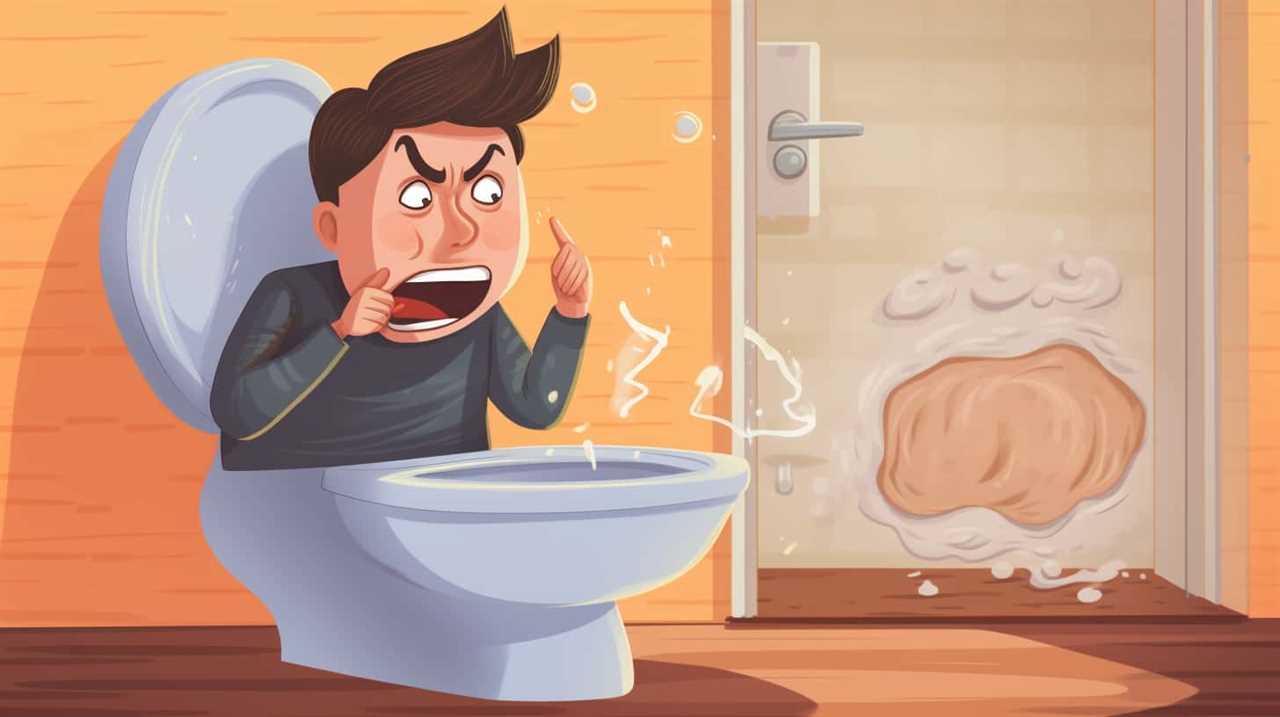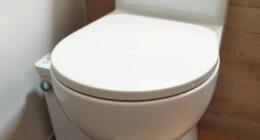Were you aware that a blocked drain is the primary cause of toilets not flushing properly?
We’ve all been there, struggling with a malfunctioning toilet. In this article, we’ll explore the various factors that prevent a toilet from flushing and provide you with the knowledge to troubleshoot and fix these issues.
From faulty flush valves to blocked vent pipes, we’ll delve into the technical details to help you become a toilet flushing master.
Key Takeaways
- Clogged drain is the most common reason for toilets not flushing, so it’s important to avoid flushing items that can easily clog the drain and to regularly maintain the toilet to prevent clogs.
- Faulty flush valve can cause weak or incomplete flush, and it can be prevented by regular maintenance, cleaning, and possible replacement if the problem persists.
- Inadequate water supply can result from a faulty fill valve, closed water supply valve, or a clogged drainpipe, and adjusting the water supply valve, cleaning the fill valve, or replacing the faulty fill valve can resolve the issue.
- Malfunctioning flapper valve can also cause weak or incomplete flush, and it may require adjustment of the chain length or replacement if there are issues with the seal or physical damage.
Clogged Drain
One common cause of a toilet not flushing is when the drain becomes clogged with debris or objects. Maintaining your toilet properly and using appropriate unclogging techniques can help prevent this issue.

Regular toilet maintenance includes avoiding flushing items such as wipes, cotton balls, or sanitary products that can easily clog the drain. It’s also important to clean the toilet regularly to prevent the buildup of mineral deposits or hard water residue.
If your toilet becomes clogged, there are several unclogging techniques you can try. Using a plunger is often effective in loosening and removing the clog. Another option is using a toilet auger to break up the blockage.
If these methods fail, it may be necessary to call a professional plumber for assistance.
Faulty Flush Valve
When it comes to a faulty flush valve, there are two main causes that can prevent a toilet from flushing properly.
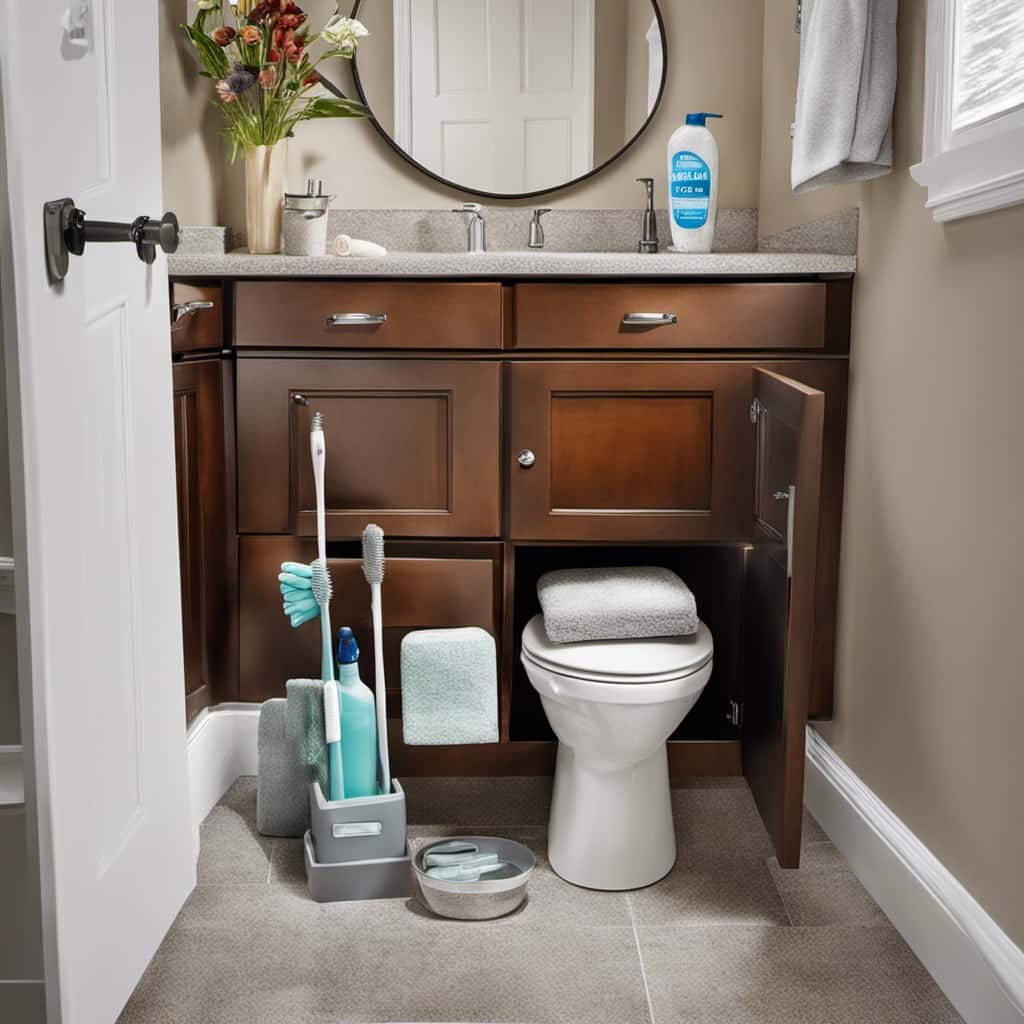
The first cause is valve blockage, which occurs when debris or sediment gets stuck in the valve, preventing it from opening fully.
The second cause is a malfunctioning flapper valve, which fails to create a proper seal and allows water to leak out, resulting in a weak or incomplete flush.
Valve Blockage Causes
Our toilet’s flushing is often prevented by a faulty flush valve’s valve blockage. Valve blockage occurs when debris or mineral buildup obstructs the flow of water through the valve, resulting in a weak or incomplete flush.
To prevent this issue, regular valve maintenance is essential. Start by checking the valve for any visible signs of blockage, such as dirt or scale deposits. If identified, remove the debris using a brush or cloth.

Additionally, flushing the valve with vinegar or a commercial descaling solution can help dissolve mineral buildup.
If the problem persists, consider replacing the faulty flush valve altogether.
Flapper Valve Malfunction
To fix a faulty flush valve, we can start by checking for any signs of malfunction. Some common issues that may indicate a flapper valve malfunction include:
- The toilet doesn’t flush properly or requires multiple flushes.
- Water continuously runs into the toilet bowl.
- The toilet tank fills up slowly.
- The flapper valve appears worn or damaged.
If you notice any of these problems, troubleshooting the flapper valve may be necessary. Start by turning off the water supply to the toilet and draining the tank. Inspect the flapper valve for any cracks, warping, or build-up. Clean the valve and the seat it rests on, ensuring a proper seal. If the valve is beyond repair, consider a flapper valve replacement.
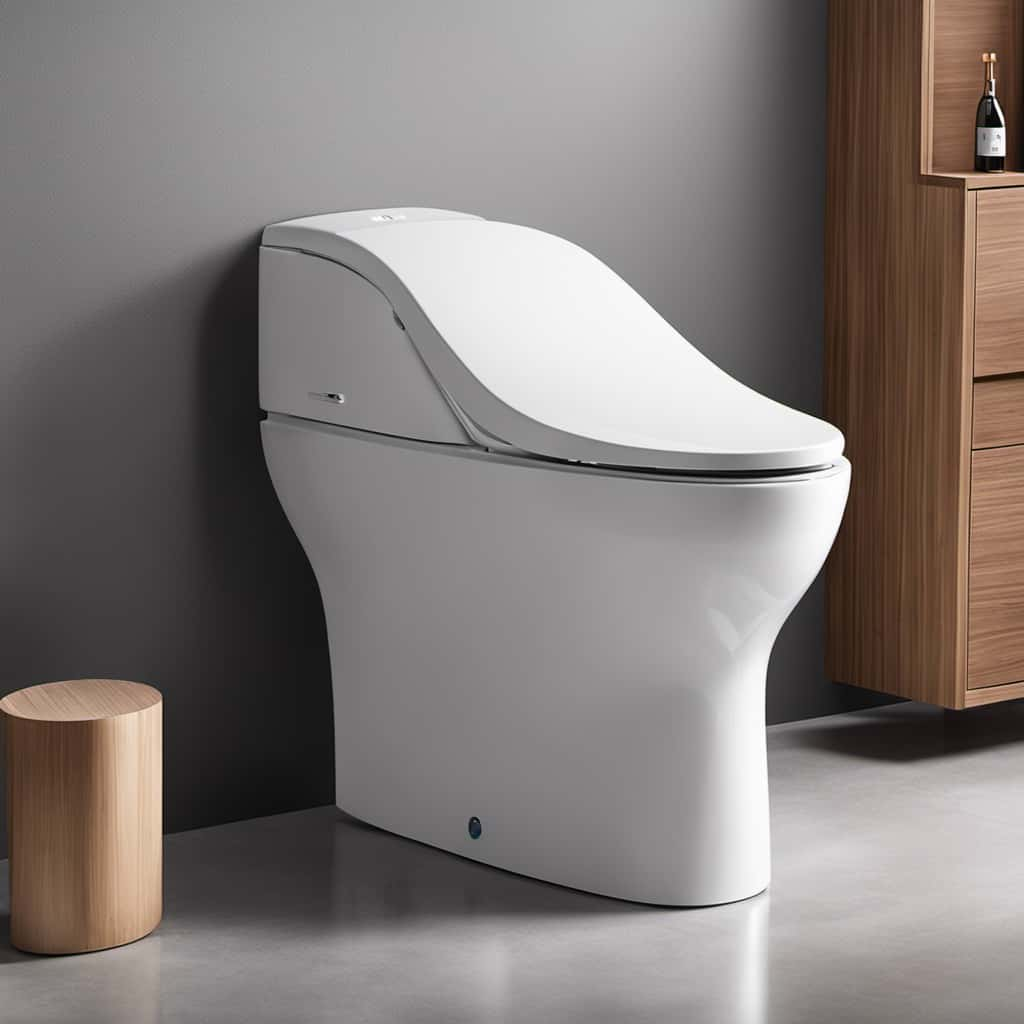
With a faulty flush valve addressed, let’s now move on to the next subtopic: water level too low.
Water Level Too Low
When the water level in a toilet is too low, it can prevent proper flushing.
One common cause is an inadequate water supply, which can result from a faulty fill valve or a partially closed water supply valve.
Another potential reason is a clogged drainpipe, as a blockage can restrict the flow of water and prevent the toilet from flushing effectively.

Inadequate Water Supply
We often encounter a problem with toilets not flushing properly due to a low water level in the tank. This can happen when there’s inadequate water supply, which affects the overall water pressure in the toilet. The fill valve is responsible for refilling water in the tank after each flush. If the water pressure is low, the fill valve may not be able to fill the tank to the required level, resulting in a weak flush.
Here are some possible reasons for inadequate water supply:
- Partially closed water supply valve
- Clogged fill valve
- Low water pressure in the plumbing system
- Malfunctioning fill valve
To resolve this issue, you can try adjusting the water supply valve, cleaning the fill valve, checking the water pressure, or replacing a faulty fill valve. Proper maintenance and troubleshooting can help ensure an adequate water supply for a proper flush.
Clogged Drainpipe
As we continue our discussion on the possible reasons for a toilet not flushing properly, one common issue that can lead to a weak flush is a clogged drainpipe, resulting in a low water level.

A clogged toilet, also known as a toilet blockage, occurs when something obstructs the passage of waste and water through the drainpipe. This obstruction can be caused by various objects such as excessive toilet paper, sanitary products, or foreign objects.
When the drainpipe is clogged, the water level in the toilet bowl is unable to rise to its normal height, resulting in a weak flush or no flush at all. If you’re experiencing a clogged toilet, it’s important to address the issue promptly to avoid further complications.
Now, let’s move on to another potential cause of a toilet not flushing properly: a malfunctioning flapper.
Malfunctioning Flapper
One common reason for a toilet not flushing is a malfunctioning flapper. The flapper is a rubber valve that controls the water flow from the tank into the bowl. When it malfunctions, it can prevent the toilet from flushing properly. Here are some troubleshooting tips for dealing with a malfunctioning flapper:

- Check for physical damage: Inspect the flapper for any signs of wear, tear, or damage. If you notice any cracks or deterioration, it may be time for a flapper replacement.
- Adjust the chain length: Ensure that the chain connecting the flapper to the flush lever is properly adjusted. If it’s too loose or too tight, it can affect the flapper’s performance.
- Clean the flapper and valve seat: Remove any debris or mineral deposits that may have accumulated on the flapper or the valve seat. This can help improve the seal and prevent leakage.
- Test the flapper’s seal: Pour a few drops of food coloring into the tank and wait for a few minutes. If the colored water seeps into the bowl, it indicates a faulty seal and the need for flapper replacement.
Blocked Vent Pipe
A blocked vent pipe can significantly hinder the flushing capacity of a toilet. The vent pipe is an essential component of the plumbing system that allows air to enter and exit the drain pipes. It works to equalize pressure and prevent a vacuum from forming, which would impede the flow of water.
When the vent pipe becomes blocked, it restricts the air flow and creates a negative pressure within the drain pipes. This negative pressure prevents water from flowing freely and can result in a clogged drain.
To resolve this issue, the vent pipe needs to be cleared of any obstructions, such as debris or bird nests. Regular maintenance and inspection of the vent pipe can help prevent blockages and ensure proper flushing functionality.
Broken Handle or Chain
When the vent pipe becomes blocked, it restricts the air flow and creates a negative pressure within the drain pipes, but another common issue that can prevent a toilet from flushing is a broken handle or chain. A malfunctioning handle or chain can disrupt the flushing mechanism, rendering the toilet unusable.
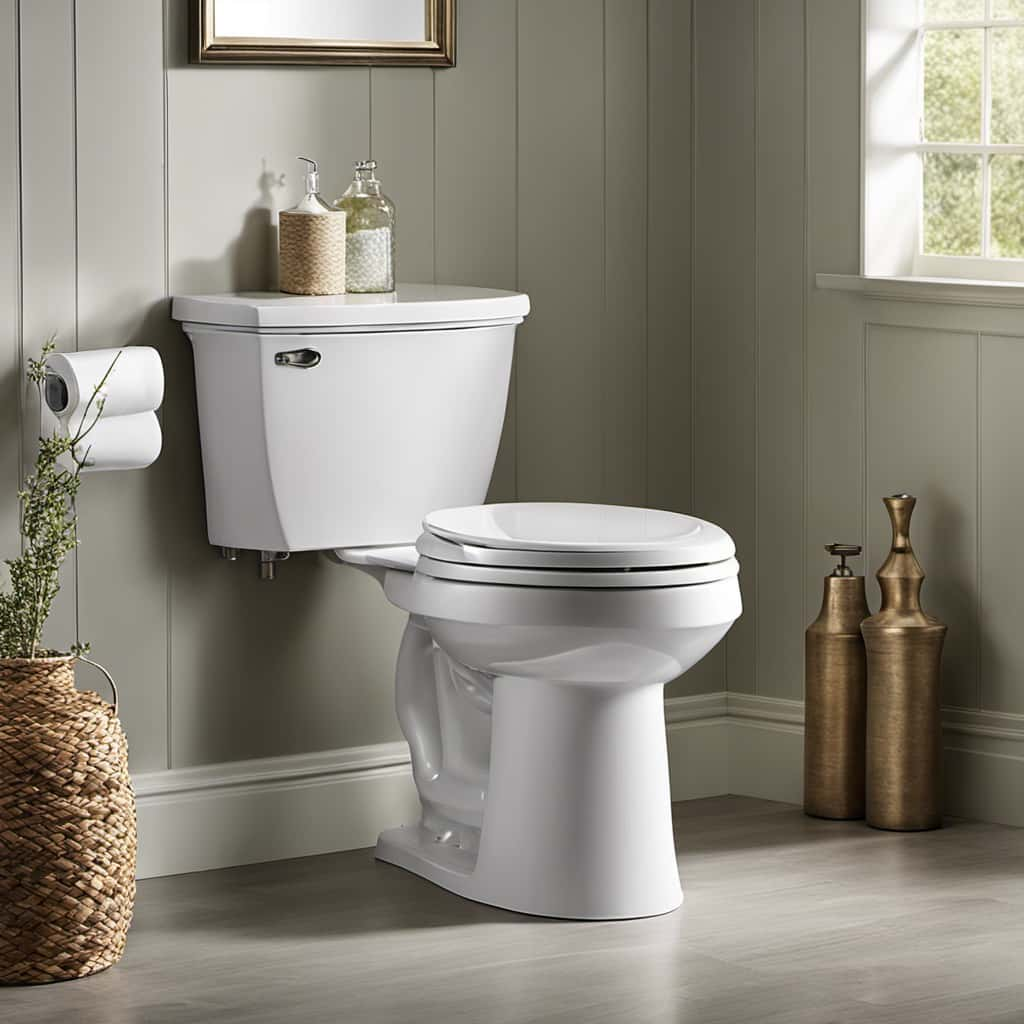
Here are some troubleshooting tips for fixing a broken handle or chain:
- Inspect the handle: Check if the handle is loose, damaged, or disconnected from the flushing mechanism.
- Replace the handle: If the handle is broken, purchase a new one from a hardware store and follow the manufacturer’s instructions for installation.
- Check the chain: Ensure that the chain connecting the handle to the flapper is properly attached and has the right amount of slack.
- Adjust the chain length: If the chain is too loose or too tight, adjust its length accordingly to ensure smooth flushing.
Defective Fill Valve
To identify a defective fill valve, we can start by checking the water level in the toilet tank. If the water level is too low, it may indicate a problem with the fill valve. A defective fill valve can cause incomplete flushing or even prevent the toilet from flushing altogether. To assist you in troubleshooting and determining whether a valve replacement is necessary, refer to the following table:
| Symptom | Possible Cause | Solution |
|---|---|---|
| Water level too low in the tank | Defective fill valve | Replace fill valve |
| Continuous running water in the toilet | Flapper not sealing properly | Adjust or replace flapper |
| No water entering the tank | Supply line blockage or valve | Check and clear blockage or replace |
If you have determined that the fill valve is indeed defective, a valve replacement is recommended. This involves shutting off the water supply, draining the tank, and removing the old fill valve before installing a new one. Following these troubleshooting tips should help you resolve the issue. Now, let’s move on to the next subtopic, which is ‘insufficient water pressure’.
Insufficient Water Pressure
Now, let’s explore how low water pressure can contribute to a toilet’s inability to flush properly.

Low water pressure can result in a weak flush and impede the toilet’s ability to clear waste effectively.
Here are some factors that can cause low water pressure:
- Clogged water supply line: A blockage in the water supply line can restrict the flow of water to the toilet, leading to reduced water pressure.
- Faulty pressure regulator: A malfunctioning pressure regulator can disrupt the water pressure throughout the plumbing system, affecting the toilet’s flushing ability.
- Partially closed shut-off valve: If the shut-off valve isn’t fully open, it can restrict the water flow and result in low water pressure.
- Leaking pipes: Leaks in the plumbing system can cause a decrease in water pressure, impacting the toilet’s flushing performance.
Identifying and addressing these issues can help restore proper water flow and ensure a strong flush.
Conclusion
In conclusion, understanding the common causes of a toilet not flushing can help us quickly troubleshoot and resolve the issue.

Like a skilled detective unraveling a mystery, we can identify and address problems such as clogged drains, faulty valves, low water levels, and more.
By familiarizing ourselves with these potential culprits, we can ensure that our toilets operate smoothly and efficiently, keeping our bathrooms clean and functional.





